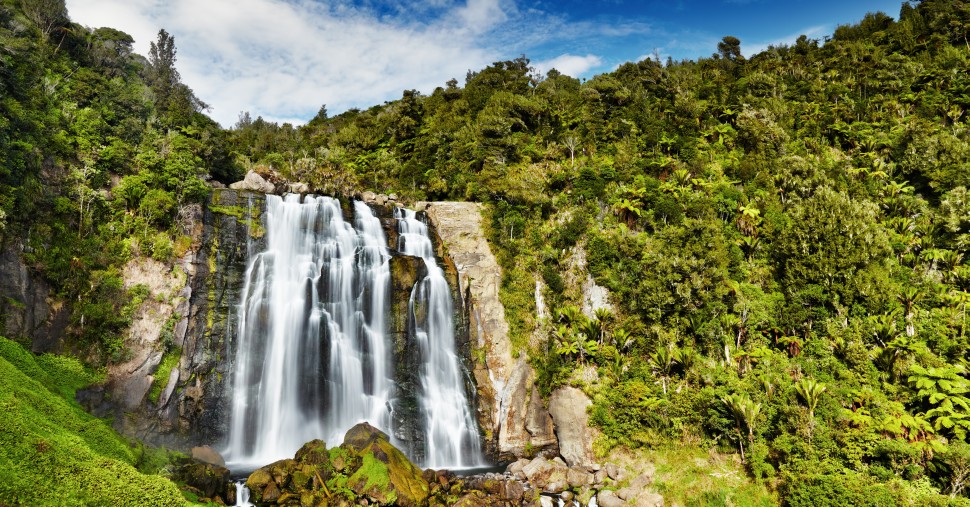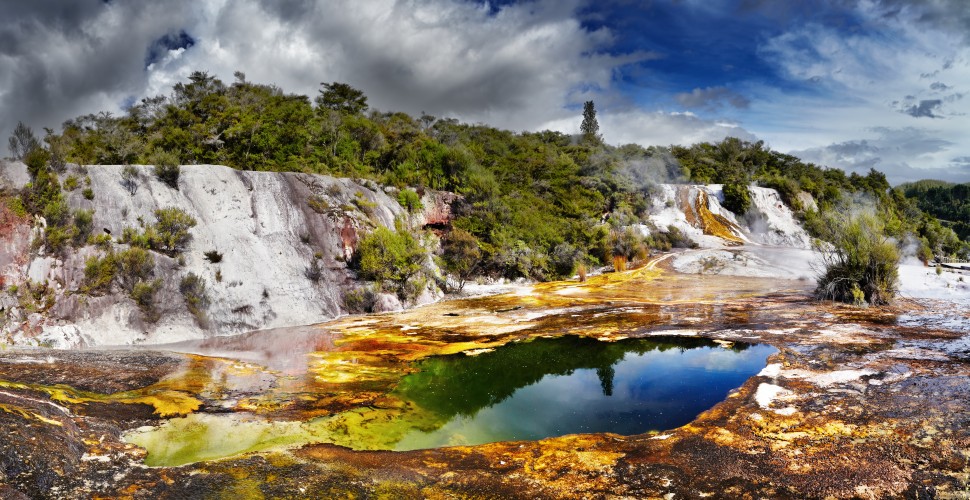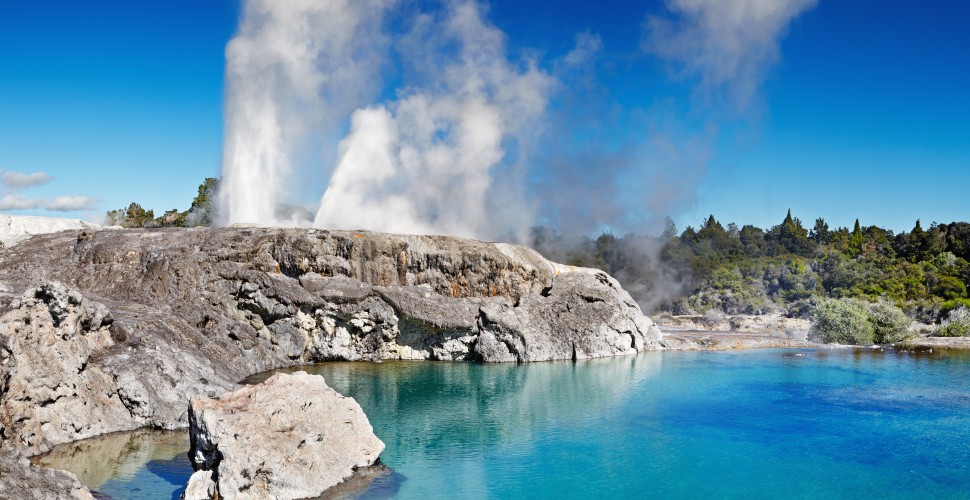Exploring New Zealand Part Two: Glow-worms and Geysers
Perhaps there was a lot of excitement on board our coach because the Waitomo Caves were billed as one of the North Island's top attractions. Or maybe everyone was simply enjoying all the lively socialising.
After we arrived in a sunny, lush green Waitomo, it struck me that this bus touring business was rather like being on a school bus excursion; everyone seemed to be acting like kids – albeit well-behaved ones.
Our tour group didn't have to worry about the 'fake Waitomo caves' reported in our guidebooks, since our guide ensured we headed to the correct place.
A guided boat trip took us deep into the Waitomo Glow-worm Caves – the most popular and well known of the caves. After getting used to the gloom, we gazed up to see a universe of mesmerising turquoise lights above us. The guide told us all about the special native New Zealand glow-worm that was casting its strange light down on us – named the Arachnocampa luminosaand. We were also given a fascinating insight into the geological history of the caves. It was an astonishing sight and well worth the asking price.
 Marokopa Falls, Waitomo, New Zealand
Marokopa Falls, Waitomo, New Zealand
The group devoured some delicious fish and chips outside the caves – although I only partook of a few chips due to my most recent flirtation with the Auckland happy hour scene. We then settled into our seats again and were back on the road.
Our next destination was Rotorua, one of New Zealand's most impressive geothermal areas. The first thing we noticed was the smell. A rotten-egg sort of whiff of sulphur that was all-pervasive. But despite a few vocal complaints from the group (the girl I sat next to on the bus was particularly disgusted with the odour), we soon forgot the assault on our olfactory senses when we espied the great steaming pools we had come for: orange sand and deep green water created an other-worldly atmosphere as sulphurous clouds billowed skywards. It was clear that New Zealand was a rather ethereal, magical place.

We peered into mud pools where dollops of smelly brown sludge were thrown many feet into the air by huge exploding mud-bubbles. The monstrous gurgling of these pools gave the sense that they were alive!
But the geysers were the most ebullient features of the area, spurting columns of hot water 30m into the air. The vivacity of these aqua-towers gave the sense that the geology around these parts was a kind of living, breathing being. It was also one that could get angry at times; the 1886 Mount Tarawera eruption buried an entire village. The remains (called the Buried Village or Te Wairoa) can be explored, although I didn't visit them myself.

With the help of the bus guide, we found some affordable accommodation in Rotorua – a simple but comfortable cabin-style establishment. This was March and the end of the high season, so there were plenty of options at good prices.
As the evening approached, what felt like the real focus of the day could get fully underway: socialising. I was tagging along with a group of German travellers, and all present wanted to experience the Rotorua's famous (or at least well-known) nightlife.
After freshening up, the group re-convened to explore what was called "Roto-Vegas" by locals, due the town's tourist-centric nightlife and the prevalence of motels. Thankfully, my stomach was once again ready to sample a Speight's (I had tried this tasty New Zealand beer before, but felt compelled to refresh my memory) and we headed out into the streets of Rotorua.
There was a certain deserted feel to the place; lots of bars and restaurants but apparently not enough people to fill them. It was clearly the start of the low season. But despite the relative quiet, we had a fun night discussing the glittering lights of Waitomo's glow-worms, and the steaming, smelly alien planet that is Rotorua (the geothermal features, that is, not the town itself).
Eventually we dragged ourselves away from the two-for-one cocktails and retired after a full and extremely pleasant day. Next up was Tongariro National Park, which would demand much more energy than the dreamy sights of Waitomo's glow-worms or Rotorua's towering geysers.
Get a Quote